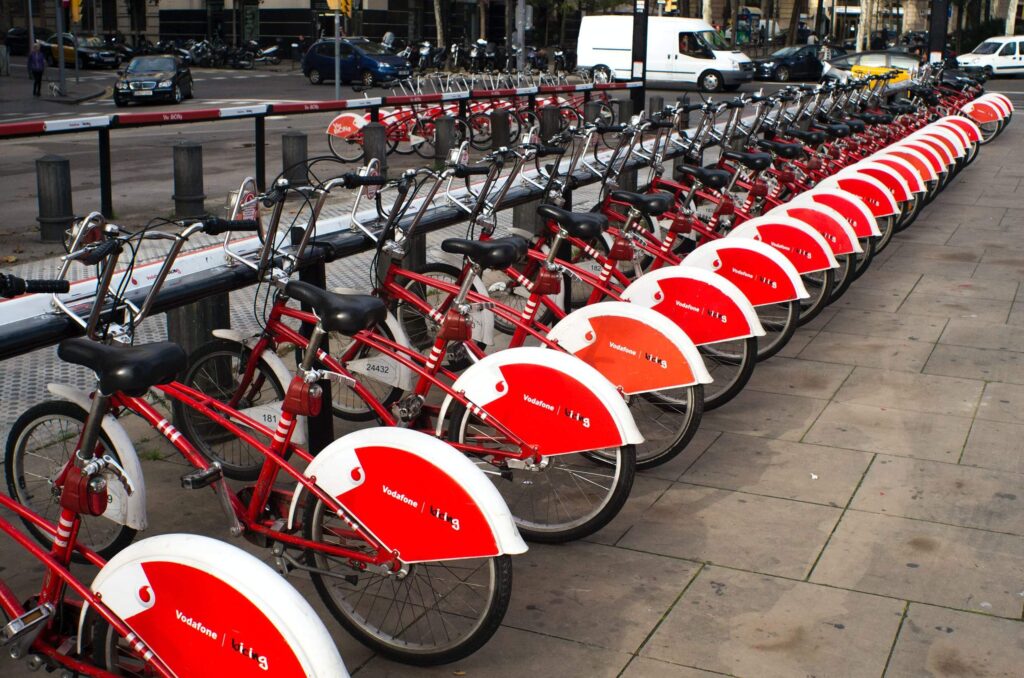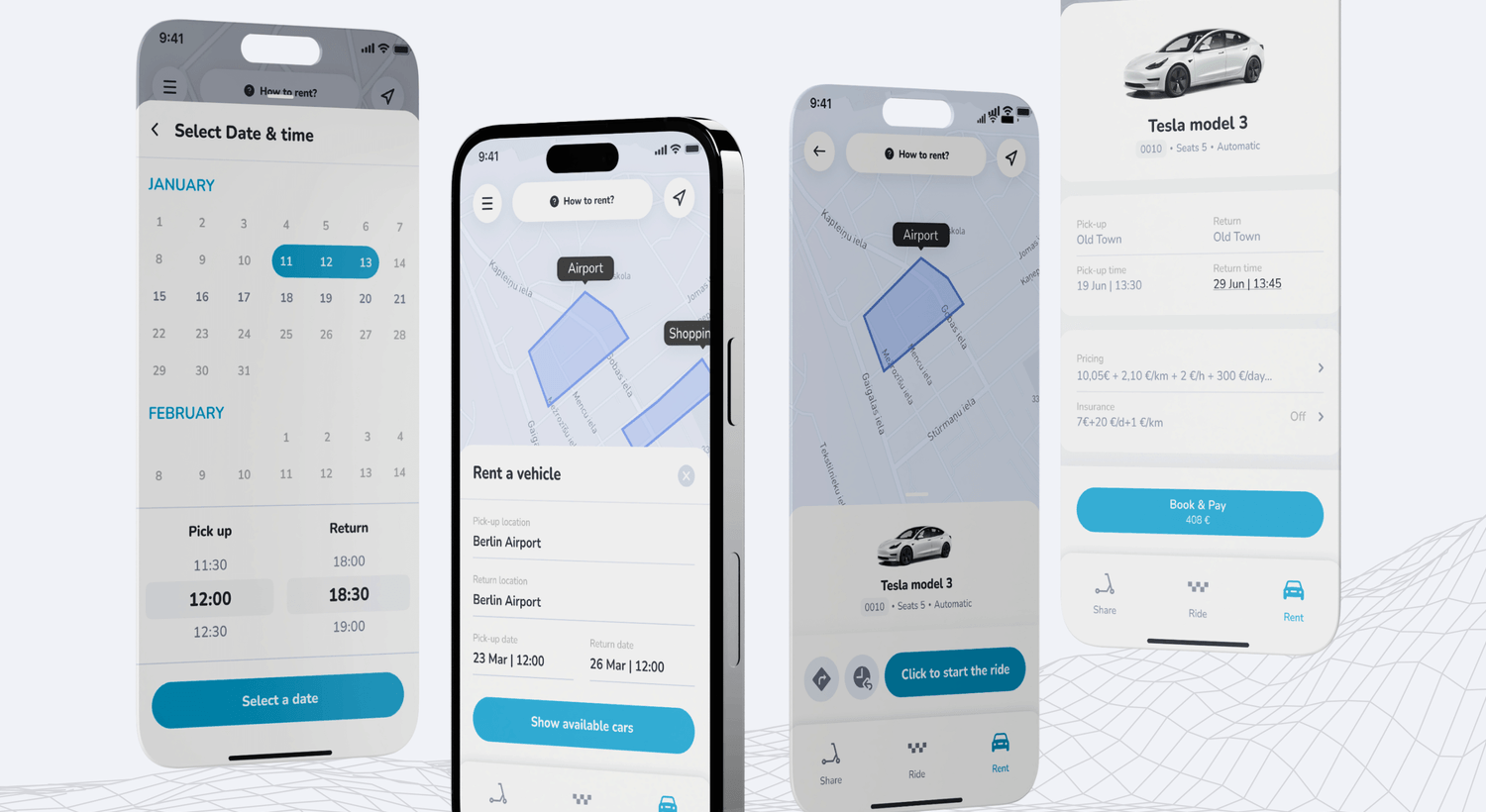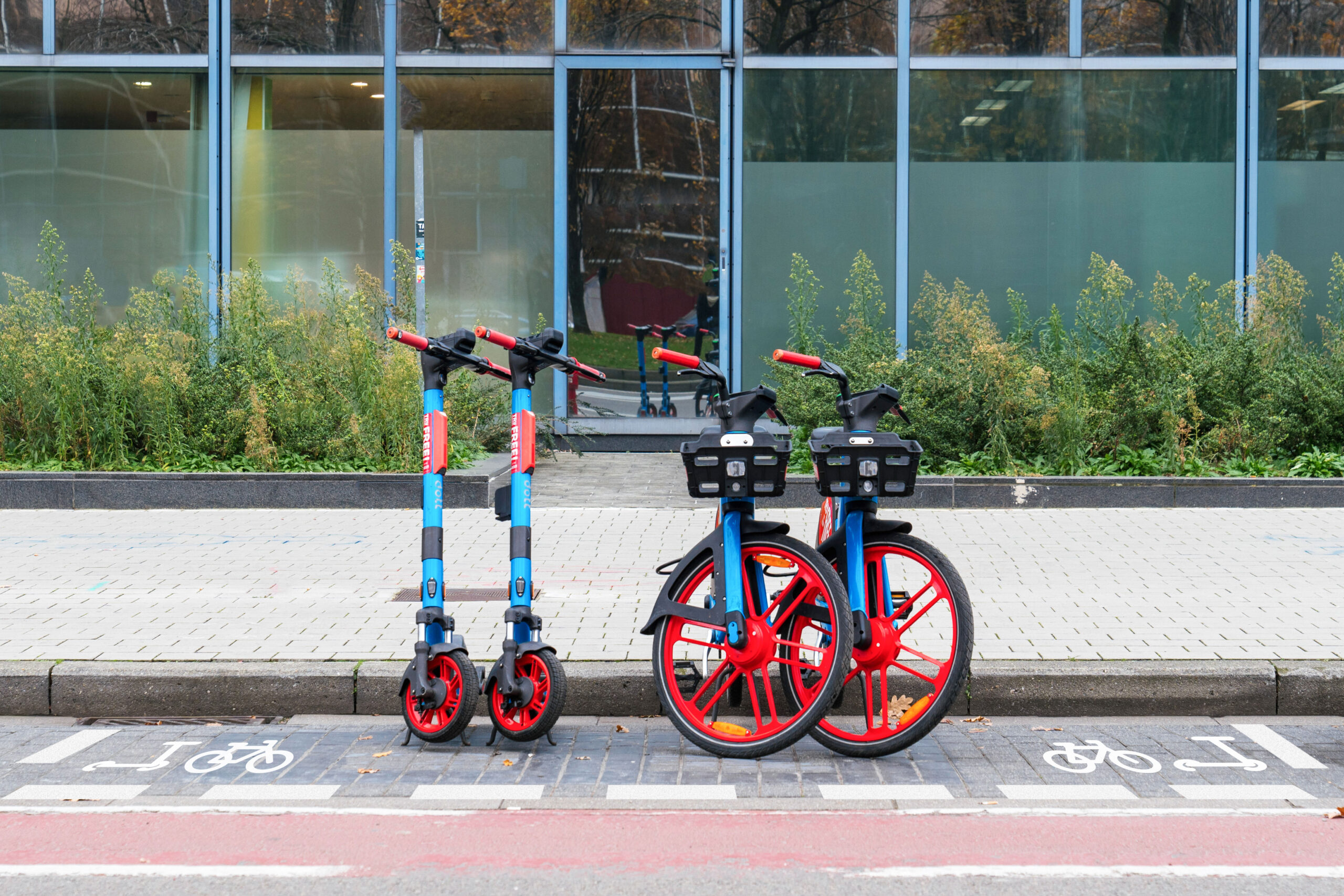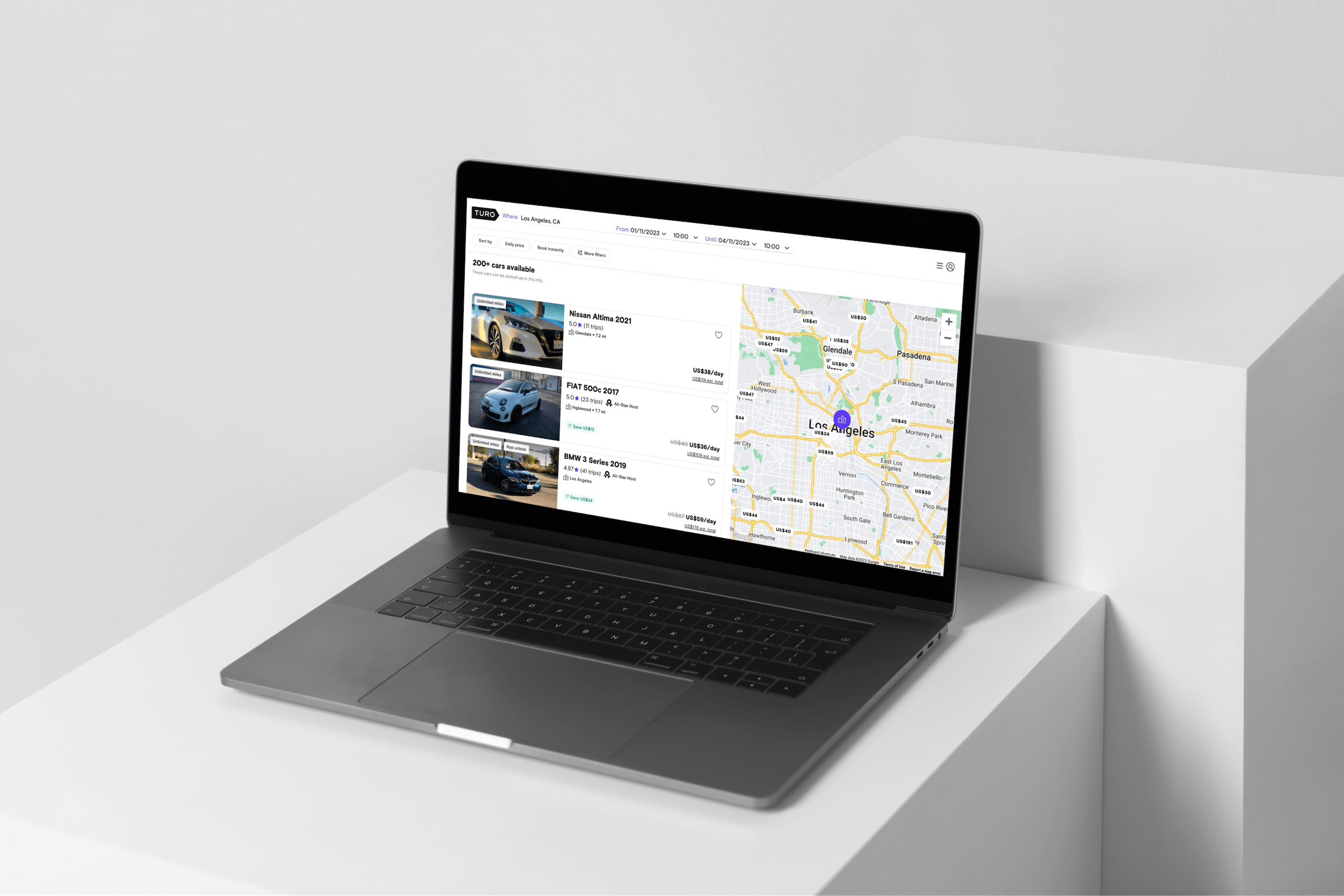1. Overestimating the number of rides
Overestimating the number of rides can lead to financial strain and operational inefficiencies. When estimating the number of daily rides you plan to get out of your fleet, be realistic and base your prognosis on usage data.
Generally, ride averages tend to be way smaller than optimistic entrepreneurs hope. A study by mobility enablement data company Fluctuo can give you an idea of trips taken daily by different shared mobility vehicles in European cities in 2022:
- Scooters – 1.7 trips/day,
- Bikes – 2.9 trips/day,
- Mopeds – 1.9 trips/day,
- Cars – 2.6 trips/day.

How to avoid:
Correct estimation of the number of rides per day involves several factors and considerations:
- Conduct thorough research of the target market, including demographics, commuting patterns, existing transportation options, and potential user behavior;
- Evaluate the population density of the areas you plan to operate in (areas with higher density usually yield more ride demand);
- Analyze the user behavior of similar services in the area – their usage patterns, peak hours, and any seasonal variations;
- Consider running a pilot program in a smaller area or for a limited time to test initial interest and usage;
- Assess infrastructure and accessibility, e.g., availability of bike lanes, parking spots, or docking stations, which can significantly impact the usability and popularity of the service.
2. Starting with an insufficient fleet to cover operating costs
Not starting with a big enough fleet size to cover operating costs is another common pitfall for micromobility companies. Starting with a small fleet can limit revenue potential and hinder the ability to meet demand, leading to customer dissatisfaction.
How to avoid:
In addition to conducting thorough market research and pilot tests, as mentioned previously, follow these tips to make sure your fleet size can cover operating costs:
- Understand the operating costs, including maintenance, charging, staff, and fleet management. Ensure the projected revenue from the estimated number of rides can cover these costs;
- Ensure your operational model allows for flexibility in scaling up or down the fleet size based on changing demand patterns;
- Apply for ATOM Academy to learn from industry experts with experience in launching micromobility services. Their insights can be invaluable in estimating the appropriate fleet size.
3. Not budgeting all potential expenses
Budgeting for all potential expenses is essential for financial stability, effective resource management, and risk mitigation, all of which are crucial for the success of a micromobility business. Failure to budget for all possible expenses for the whole year can lead to financial instability and operational disruptions.
How to avoid:
- Create a detailed list of all potential expenses, including operational costs like maintenance, charging infrastructure, fleet management, staffing, fleet insurance, regulatory compliance, marketing, and administrative fees;
- Analyze historical data from similar services or markets to identify and anticipate various expenses that might arise throughout the year, including unexpected costs and seasonal variations;
- Factor in a contingency fund within the budget to cover unforeseen expenses or emergencies;
- Conduct regular budget reviews and updates throughout the year. This allows for adjustments based on real-time data, changes in market conditions, or unexpected expenses.
4. Not being flexible with business models
Inflexibility with business models or the inability to pivot in response to market changes can hinder a company’s ability to adapt and grow. It’s crucial for a micromobility service to remain agile and open to adjusting business models based on market feedback and evolving trends.
How to avoid:
- Develop a business model that allows for flexibility, scaling, and adaptation based on market demands and changes;
- Gather regular user feedback – it will enable you to make adjustments swiftly based on user needs and preferences;
- Integrate technology that facilitates business model adaptability – e.g., with ATOM Mobility software, operators can adapt their fleet for different purposes to find the best market fit. For example, if free-floating car sharing is not the best fit for your city, you can pivot to short and long-term rentals with calendar booking, or offer B2B corporate sharing schemes, etc.
- Establish partnerships and collaborations with complementary businesses or services to provide flexibility through diversified revenue streams and collaborative solutions.

5. Choosing the wrong software partner
Selecting the wrong software partner can result in poor customer experience, lower usage, and negative ratings. Even seemingly small system inefficacies can lead to users choosing competitor services instead, so make sure you don’t underestimate UX. Conversely, a convenient and intuitive platform with a wide range of features can help to attract and retain customers.
How to avoid: carefully vet potential software partners, considering factors such as reliability, user-friendliness, customer support, and the rate of new features shipped. Factor in the flexibility of software and whether it would be able to scale with your business when needed.
ATOM Mobility provides all the software you need to launch and scale your own vehicle-sharing, ride-hailing, or digital rental business. In addition to all the core features you would expect, including a customizable rider app and a feature-rich operator dashboard, businesses can benefit from AI-powered vehicle analysis and advanced analytics tools to support informed business decisions.
6. Not securing long-term permits
Operating without long-term permits can lead to regulatory challenges and uncertainty, impacting the company’s ability to establish a stable presence in the market. Without a stable operating environment, it becomes challenging to plan investments, expansions, or long-term strategies. In addition, competitors might have an advantage in securing prime operating locations or gaining market dominance, making it harder for the company to establish itself.
How to avoid:
- Prioritize securing long-term permits to operate, fostering a more transparent, predictable, and sustainable business environment;
- Proactively address concerns raised by authorities to build trust and increase the chances of obtaining long-term permits;
- Be prepared to adapt to evolving regulations and work towards aligning the business model with local policies and community needs.
7. Ineffective management
Our final tip is a universal one, as weak management can derail businesses of any size or industry. That said, strong leadership is especially crucial for achieving success in competitive markets like micromobility, where a determined and competitive mindset can be a deal-breaker.
How to avoid:
Whether you’re a manager yourself or a CEO looking to hire one, look for these effective management characteristics:
- Excellent communication skills. Managers must clearly convey ideas, expectations, and feedback to the team, ensuring everyone is on the same page and can work collaboratively.
- Strong and determined leadership. A strong manager must lead by example, inspire their team, set clear goals, and effectively delegate tasks. They should also be able to motivate employees, resolve conflicts, and foster a positive work culture.
- Risk-taking and decision-making. Micromobility startups often operate in evolving markets. A good manager must be comfortable taking calculated risks and making decisions under such conditions.
- Adaptability and innovation. In the dynamic micromobility sector, managers must be flexible, ready to pivot strategies, develop unique services, and adjust to the rapidly changing market conditions or technological advancements.
- Customer-centric approach: A successful manager focuses on delivering excellent customer experiences, whether it’s through user-friendly apps, efficient service, or responsive customer support.
Know Why Micromobility Companies Fail – And Yours Won’t
Now that we’ve covered the various challenges micromobility companies face, you are equipped with knowledge and practical advice for avoiding these risks. By carefully addressing these key reasons and taking proactive measures to avoid them, you can enhance your chances of long-term success in this rapidly evolving industry.
This article was originally published by ATOM Mobility.














